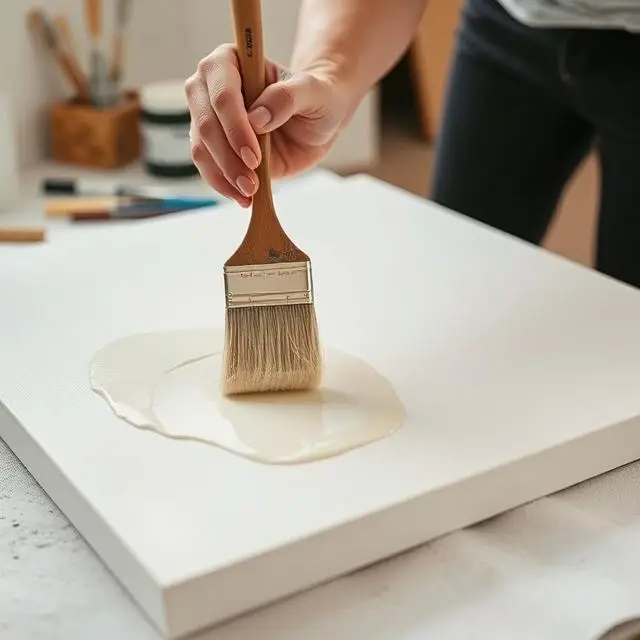Whether you’re an experienced artist or a beginner, painting is a creative process that requires patience and practice. However, even the most seasoned painters can make mistakes that affect the outcome of their artwork. If you’re looking to improve your painting skills, here’s a guide to the 10 most common painting mistakes and tips on how to avoid them.
1. Not Preparing Your Surface Properly

One of the most common painting mistakes is neglecting surface preparation. Whether you’re painting on canvas, wood, or paper, it’s essential to ensure the surface is clean and primed before applying any paint. If you skip this step, your paint may not adhere properly, resulting in uneven coverage or peeling.
How to Avoid It:
Before painting, always clean your surface and apply a suitable primer. For canvas, use gesso to create a smooth texture. For wood or metal, a specific primer designed for those materials will ensure better paint adhesion.
2. Using the Wrong Paint for the Job
Different types of paints have specific purposes, and using the wrong type can lead to undesirable effects. For instance, oil paints on canvas are great for blending, while acrylics dry faster but are more forgiving in layering. Using watercolor on canvas without the proper preparation can cause the paint to bleed and ruin your piece.
How to Avoid It:
Research the best type of paint for your project and materials. Acrylics, oils, and watercolors all behave differently. Stick to the right medium for your surface for optimal results.
3. Painting with Dirty Brushes
Using dirty brushes can leave unwanted marks, fuzz, or colors in your painting, which can ruin your work. Cleaning your brushes between color changes or when switching between techniques ensures that your paint remains fresh and true to the color you intend to apply.
How to Avoid It:
Keep a clean water jar or solvent container handy and rinse your brushes often. When working with multiple colors, always clean your brushes before switching hues to avoid muddying your palette.
4. Overloading Your Brush with Paint
While it might seem tempting to dip your brush deep into the paint, overloading it can lead to streaky strokes or blobs of excess paint on your surface. This is especially problematic when working on fine details.
How to Avoid It:
Dip only the tip of your brush into the paint, and gently tap off any excess. It’s better to add more paint gradually than to apply too much at once.
5. Skipping the Color Mixing Process
A common mistake is relying on pre-mixed paints instead of mixing your own colors. While store-bought colors are convenient, mixing paints allows you to achieve custom shades and more depth in your work. Skipping this step can make your painting look flat and less dynamic.
How to Avoid It:
Experiment with mixing colors to create new shades and tones. Use a palette knife or mixing tray to blend colors, and don’t be afraid to adjust until you get the perfect hue.
6. Not Using Enough Layers
Another mistake many painters make is not building up enough layers of paint. Many beginners believe that one layer will be enough, but layers add texture, depth, and richness to your artwork.
How to Avoid It:
Give each layer time to dry completely before applying another. Use glazing techniques to build depth and richness gradually, especially with acrylic and oil paints.
7. Ignoring the Importance of Lighting
Poor lighting can cause you to misjudge colors and shadows, affecting the overall result of your painting. Without proper lighting, you might not notice certain details or color variations that are important to your piece.
How to Avoid It:
Set up a consistent light source while you paint. Ideally, use natural light or a daylight bulb to avoid color distortion. Always ensure that your painting area is well-lit for accurate color and shadow representation.
8. Overworking the Painting
Sometimes, less is more. Overworking a painting by continually adding more details or layers can result in a muddied, overcomplicated piece. It’s easy to get carried away, especially when you’re trying to perfect every little detail.
How to Avoid It:
Step back and assess your painting frequently. If you feel like you’re getting lost in the details, take a break and come back with fresh eyes. Know when to stop to preserve the integrity of your work.
9. Not Understanding the Importance of Composition
Composition refers to the way elements are arranged in your painting. Failing to consider composition can lead to a lack of balance or focus, making your artwork appear disjointed or unfinished.
How to Avoid It:
Study the rule of thirds, leading lines, and focal points. Sketch out your composition lightly before beginning the painting process to ensure that the arrangement of elements is visually appealing.
10. Forgetting to Sign Your Work
After spending hours perfecting a painting, it’s easy to forget to add your signature. Not only does signing your artwork complete it, but it also marks your work as your own.
How to Avoid It:
Always sign your painting in a discreet spot. Use a signature that reflects your style, and don’t forget to include the date or year if you prefer.
Final Thoughts
Avoiding these common painting mistakes will help you achieve more polished, professional-looking artwork. Whether you’re just starting out or refining your skills, these tips are sure to elevate your painting process and boost your confidence. Remember, the key to improvement is patience, practice, and learning from your mistakes. By being mindful of these common errors and using these techniques to overcome them, you’ll be able to create stunning, meaningful paintings that you can be proud of!
